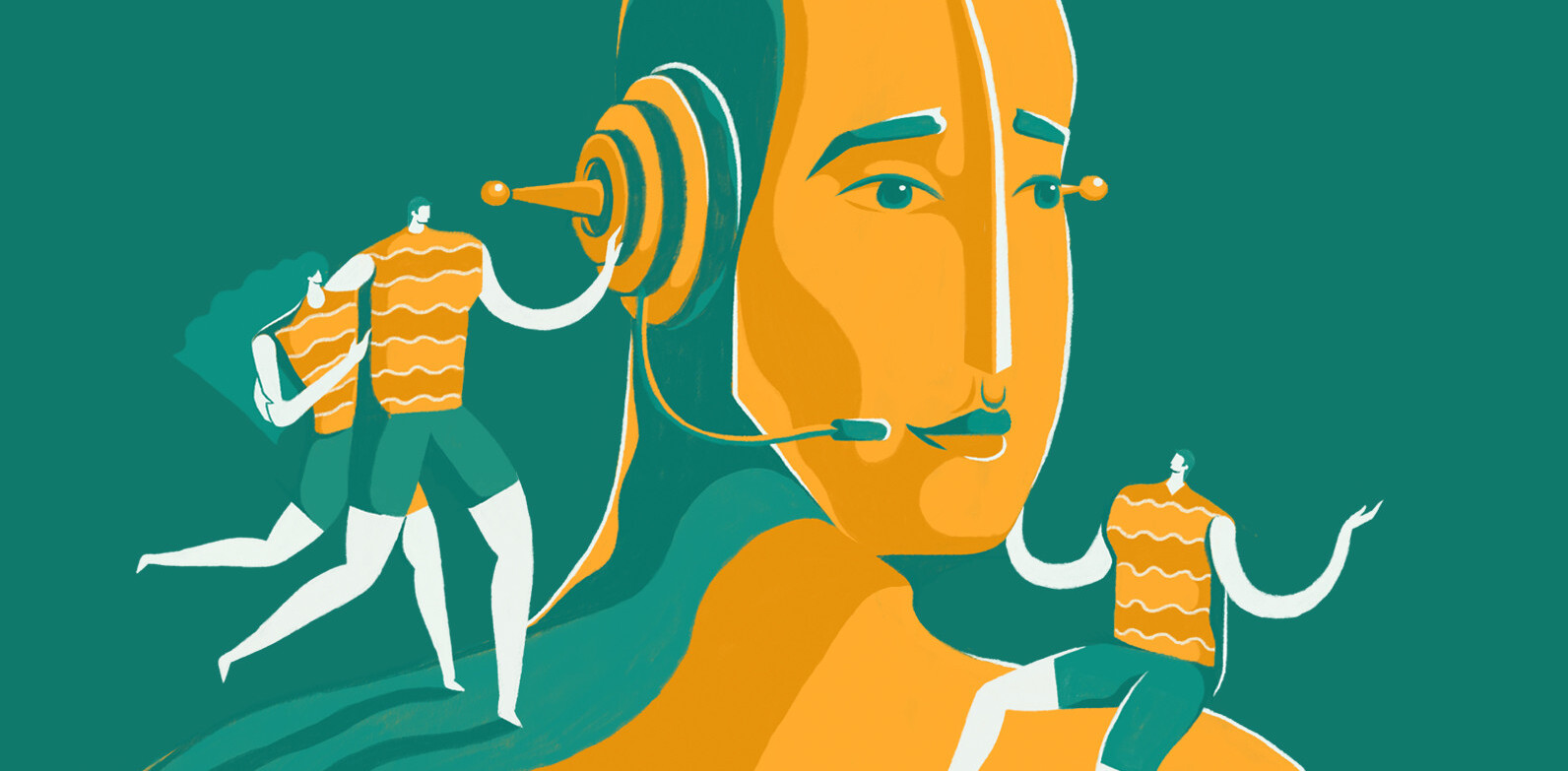
Business strategies – especially in the traditional sense – are rather pushy. If you have a product, your strategy is to explain why a customer should use it.
Design thinking as a strategy flips this. Instead of forcing a product on customers, instead, it sees things from the customer’s perspective. A design mindset is not problem-focused, it is solution focused and action-oriented towards creating a preferred future. Design Thinking draws upon logic, imagination, intuition, and systemic reasoning – exploring the possibilities of what could be. This train of thought creates desired outcomes benefiting the end user.
When design principles are applied to strategy and innovation the success rate for innovation dramatically improves.
Design thinking for bankers
Many banks are working hard to bring a user-centric approach to redesigning their services.
Banks are continuously exploring new ways to play into shifting customer desires and to keep up with tomorrow’s technological developments – from BBVA’s “ATM of the future” to ASB New Zealand interacting directly with customer via video chat.
For Dutch bank, ABN AMRO, this means getting its employees in the right mindset.
So I shadowed an ABN AMRO workshop for a behind the scenes look at how it leverages workflow and teamwork in a nurturing and innovating way.
This two-day Design Thinking workgroup focused on the company’s internal Get the Mindset program.
With the Get The Mindset program, employees can attend innovation workshops, master classes or visit Startup Friday. This program hopes to inspire a change of mindset within the bank, which makes people start to experiment, learn and co-create. A program that will eventually lead to innovation.
Going from unknown to tangible
When you enter the Innovation Centre at ABN AMRO – with its colorful seats, wooden swings, big displays, open meeting rooms and brainstorm corners – you have the feeling of being inside a Google facility instead of a big banking building.
It’s here where I will be shadowing the following key players within the company: Lourens (Experiment Expert), Luc (Visual Designer), Marcella (Experiment Expert) and Linda (Trainee Innovation Centre), with Tessa (Design Thinker). For the next two days, I’ll be part of the innovation team. If I’m being honest, the latter is a bit intimidating.

But that’s one reason programs like this exist – to take the unknown or the scary and make it tangible; make it work. As Tess reminds us:
What is important to know, tools are not toys. People sometimes use different tools as a purpose of its own, but tools are just a means to gather insights.
Design Thinking, where the client is paramount, is the main focus. Here, the employee is the client and we need to figure out their issues, define their needs, and explore different solutions.
Day 1: Persona’s Chanel, Evert and Janet
We scan the interviews and distillate these frequent problems:
- Employees don’t see the urgency
- Their management is not promoting innovation enough
- They’re not being informed properly, they’re too busy
- Their new gained knowledge is not applicable
- They share their knowledge about innovation with others but there is no follow-up
- People have their own sources
… I think that’s plenty.
Every valuable remark, every question, every thought is written down, and finds its way onto an empathy map. We then step into the shoes of the employees and reframe the problem. What do they feel, what do they need, and how can we help them?
Our work resulted in three profile subjects we name Chanel, Evert and Janet.
- Chanel does not really want to act and innovate because she doesn’t see the urgency of innovation. She thinks it’s not important for her work, and gains her information externally, so she needs to be better motivated and informed.
- Evert is actively seeking innovation in his work. He wants to share it, but, more importantly, he wants to make his ideas and knowledge applicable. He wants to act but needs supporters and more purpose.
- Janet does want to innovate but doesn’t really know how. She needs a way to better work together with her peers, and to get a better overview of the innovation the bank offers, in order to get motivated to start to innovate herself.
To tackle the aforementioned problems, we come up with the “Crazy Eight”: Eight ideas that might tackle one (or more) of these problems.

Having done that, the team votes for the best idea. This results in a tie – Luc’s idea for a FreeSpace session and Linda’s Ongoing Innovation platform.
Day 2: A shaking Steve Ballmer
With yesterday’s winning ideas, FreeSpace and Ongoing Innovation Platform, on top of mind, we must now flush out both ideas in order to create working prototypes by the end of the day.
Lourens and Luc work on Freespace. Linda, Marcella and Tessa try to streamline the Ongoing Innovation Platform. I alternate between the two, trying to keep up with all of them.
To tackle the issue of employee understanding, Freespace is meant to be a two-day or three-day workshop, where multidisciplinary teams work together, allowing participants to not only gain knowledge of other departments’ methods and tools, but use them and understand how they work.
With Design Thinking in mind, instead of naming topics that might be interesting, we actually ask people and let them decide which topics are more important.
With the results in hand, Luc creates a formal invitation. The result is both poignant and funny. ‘I am a little bit ashamed by it, because….’, Luc smiles. ‘Don’t be’, Tessa says while an image of Steve Balmer is shaking across the screen, representing the pitch-part of the Freespace session.
A prototype doesn’t need to be beautiful, it has to add value. The prototype’s level of detail is linked to the phase it’s in. First you do it lo-fi and later on you make it hi-fi.
Everything in one place
The same goes for the Ongoing Innovation platform. It goes through different iterations before it works 100 percent perfectly, but that’s fine.
Here, the idea is that there will be one online information platform where employees can find everything about innovation at the bank – a place to gather information about sessions and workshops, sign up for the newsletter, read about the latest happenings related to innovation, and so on.

Linda and Marcella focus on a prototype for iPads that will be distributed all over the bank. The tablets will hold only a few slides, but they will be interesting enough to trigger people’s attention and get them to act.
It’s imperative that the flow of the slides:
- Work properly
- Contain all the information
- Provide people with a recommendation workshop
While Marcella and Linda work on the slides, Tessa designs the prototype and the structure behind it. When the slides are done, the prototype gets updated quickly and becomes ready for testing. Linda and Marcella head out to present it to employees and gather feedback.
Magical
Great design has that “wow” factor that makes products more desirable and services more appealing to users, but you don’t have to be a designer to think like one.
Design thinkers rely on customer insights gained from real-world experiments. You can design the way you lead, manage, create and innovate, and it can be applied to systems, procedures, protocols, and customer/user experiences.
At the end of the bootcamp, Tessa reiterates how employees feel about the overall objective to this new way of thinking:
A boot camp like this really shows off its potential. It also gets people to gather around as a group and commit to a common goal; to gather valuable insights and create something tangible. If they can show a working prototype to their managers and get them enthusiastic as well, then we did something magical. And that is just awesome.
I can only agree. Not working with Design Thinking on a daily basis, but merely read about it, I saw first-hand what can be achieved in just two days.
If you have a positive mindset and are not afraid to fail and experiment, and everybody on your team is on the same page, great things can happen. No, let me rephrase that: Innovation will happen.
Get the TNW newsletter
Get the most important tech news in your inbox each week.
Whatever your specialism, with ABN AMRO your talent and creativity will help build the bank of the future. Find out what it’s like to work for ABN AMRO and learn more about their exciting job opportunities.






